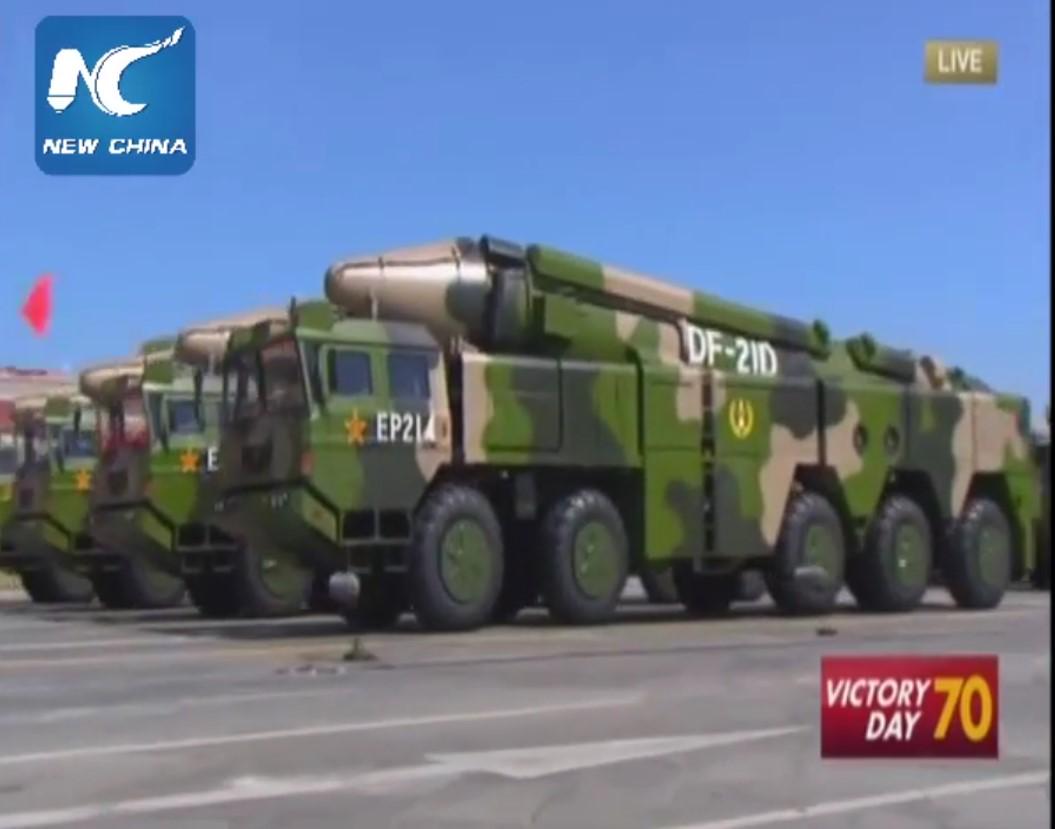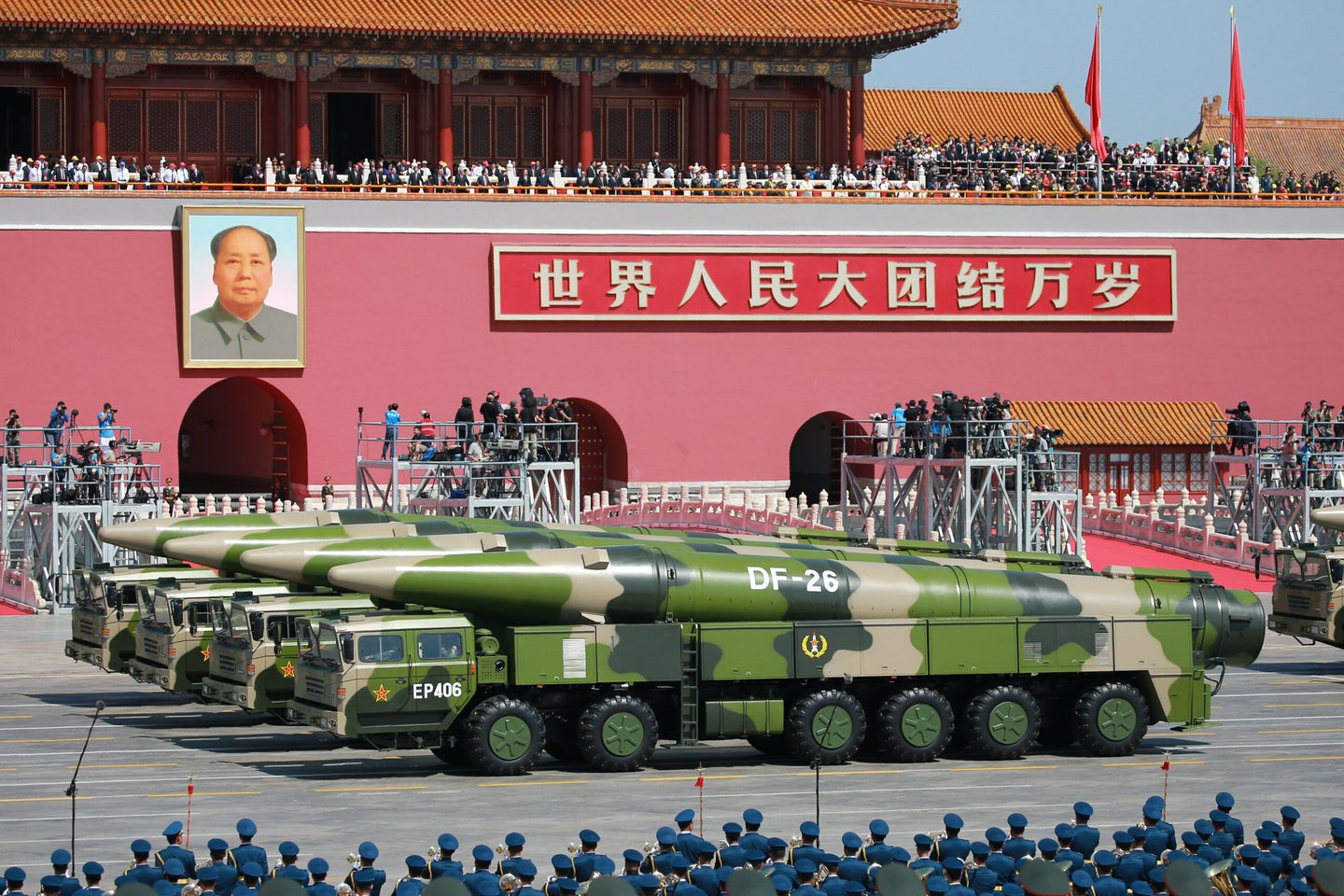China has been demonstrating its ability to strike “enemy aircraft carriers” as part of its psychological warfare strategy against the US military for the past few years. So much so that it has been practicing simulated multi-wave ballistic missile strikes on a regular basis.
The Chinese PLA has launched precision strikes at “target ships” with DF-21D missiles making them completely useless. These anti-ship ballistic missiles (ASBMs) in China’s inventory can cover most of the Western Pacific, where US carriers are frequently stationed.
However, this does not imply that aircraft carriers are obsolete; they continue to play a crucial role in the battlefield, which is why China is developing its third aircraft carrier for its own Navy.

The deployment of US carriers in the Indo-Pacific sends a message to China and the rest of the area that the US military has reiterated that it will preserve maritime freedom in the face of Chinese aggression.
PLA’s Target Practice
With tensions rising between the two countries, China has created mock-ups of a US Navy aircraft carrier and destroyer in its northwest desert, in preparation for a future naval battle, reported USNI News.
Satellite images captured by Maxar Technologies on October 20, 2021, show the outlines of a Ford-class US aircraft carrier and at least one Arleigh Burke-class destroyer in the Taklamakan desert in northwest China’s Xinjiang.

The facility is visible from space, indicating that Beijing is attempting to demonstrate the capabilities of its missiles to Washington. A similar test involving its “carrier killer” DF-21D was reportedly planned in August last year as well.
According to geospatial intelligence firm, All-Source Analysis, which identified the site using satellite imagery, the area has typically been used for ballistic missile testing. The carrier target structure was originally developed between March and April of 2019, it said citing past satellite photographs.
The site was completely demolished in December 2019, only to be resurrected in late September of this year, and the construction was nearly finished by early October.
China's rail-mobile American-aircraft-carrier-shaped missile target spotted in Ruoqiang County (near a former target range used to test early versions of carrier killer DF-21D anti-ship Ballistic Missile), Taklamakan desert of Xinjiang.https://t.co/H5yuGGZpyj pic.twitter.com/PDGUsUdprD
— Eva 郑 عائشة (@evazhengll) November 8, 2021
The PLA Rocket Force is in charge of the Chinese anti-ship ballistic missile programs. The DF-21D is a land-based missile with a range of nearly 800 nautical miles. To target ships, it possesses a maneuverable reentry vehicle (MaRV).
Another variant, DF-26, has a range of around 2,000 nautical miles. Earlier, a large concrete pad, roughly the size of a carrier, was used as a target.
Meanwhile, Chinese Foreign Ministry spokesman Wang Wenbin said on Monday he was unaware of alleged mock-ups shaped like US Navy ships in China’s Xinjiang province. “I’m not aware of the situation you mentioned,” Wang said during a press conference.
China Launches New Ballistic Missile Submarine That Can Strike US Mainland From Indo-Pacific Itself
The PLA Rocket Force
Since 1985, China’s missile force, known as the Second Artillery Force (SAF) or Second Artillery Corps (SAC), has undergone a significant transformation. The SAF was redesignated as the PLA Rocket Force (PLARF) on December 31, 2015.
Along with the PLA, PLAN, and PLAAF, the PLARF was upgraded from an independent branch to the fourth military service.
The PLARF, which is in charge of China’s conventional and nuclear missiles, has raised 10 brigades since 2017 and deployed dozens of new weaponry.
Strategic deterrence and warfighting are the two primary goals of the PLARF. The PLARF, as the successor to the SAF, is China’s main force for strategic deterrence. In July this year, a missile brigade associated with the PLA Rocket Force held an exercise at midnight, involving training courses such as multi-wave mock fire strike and transporting and loading of missiles.
It seems China launches DF-21D MRBMs from Ningbo (Zhejiang) and DF-26 IRBMs from Da Qaidam (Qinghai) to the South China Sea today. pic.twitter.com/lSFXXVoisZ
— Duan Dang (@duandang) August 26, 2020
Chinese troops were seen practicing with DF-26 intermediate-range ballistic missiles in video footage from the exercises, which likely needed troops to shoot, move, reload, and shoot again.
Col. Jiang Feng, deputy commander of a missile brigade, said that recently that night drills have been held on a regular basis, generally lasting into midnight. They have included a variety of launch points and targets, as well as multiple fire strikes and relocations.
DF-21D and DF-26
China is said to have two types of land-based ballistic missiles capable of striking warships. The DF-21D is a road-mobile ASBM with a range of over 910 nautical miles, and the DF-26 is a multi-role intermediate-range ballistic missile (IRBM) with a range of 2,160 nautical miles.
Both are capable of precise conventional and nuclear strikes on surface targets, as well as conventional strikes against naval targets.

The DF-21D potentially posed a serious threat to US and NATO fleets’ operations in the Western Pacific. With the ASBM, the Chinese navy could perform long-range precision attacks against ships, notably aircraft carriers, from China while protecting its land-based assets.
With its enhanced range, the DF-26 missile can cover a large area in the South China Sea, including the Indo-Pacific region. The missile can purportedly be fired at an aircraft carrier from a distance of 1000 to 2000 nautical miles.
The D-26 IRBM, which was first publicly disclosed in 2015, has swiftly become one of the PLARF’s most frequently deployed systems, with at least five brigades having been equipped so far. These brigades are widely spread regionally, with one each in northwest, northeast, and central China, as well as two more in the southeastern region.
The DF-26’s capacity to carry nuclear or conventional warheads is one of its most significant features. It is known that at least one brigade prepares for both operations.
- Contact the author at ashishmichel@gmail.com
- Follow EurAsian Times on Google News




